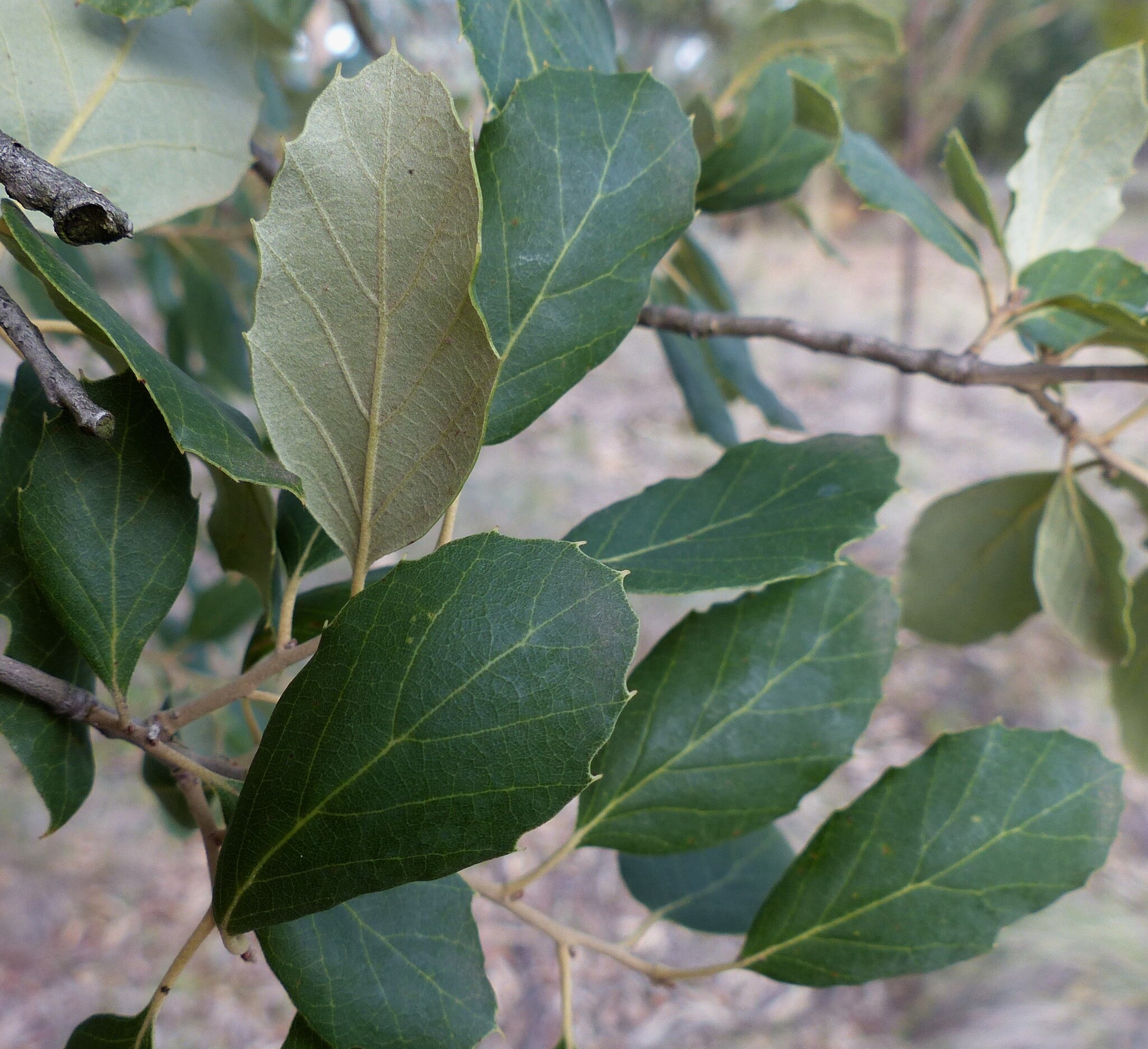
Evergreen tree to about 10 m tall or more. Bark thick and corky. Young shoots yellow-hairy. Leaves evergreen, tough, ovate, mostly 4-7 cm long, base rounded or occasionally subcordate, margin with mostly 4-5 pairs of small teeth, glossy dark green above, pale grey hairy below. Leaf stalk 1-1.5 cm long, often red on upper surface. Fruits oval to oblong, 1.5-2.5 cm long with cup enclosing one third to a half of the acorn; cup scales long and erect or widespreading at the tip.
S Europe, N Africa
A popular and impressive tree used mostly in the 19th century with some impressive mature trees remaining; now rarely planted.
The bark is the source of true cork; it takes about 20 years to develop sufficient thickness for cropping, after which trees may be stripped every 8-10 years. Most commercial trees are grown in Portugal but experimental commercial plantings have been established in Australia in recent times.
Thick corky bark; evergreen leaves with 4-5 small teeth on each side.
Cooke (1961).
SA: Mt Barker (Mt Barker Rd, 300 m on left towards Hahndorf from Mt Barker, 10 m tall, 15 m spread, circumference 3.2 m at chest height). NSW: Bathurst (Machattie Park); Sydney (Royal Botanic Garden Sydney; University of Sydney, near NE entrance). ACT: 5 ha plantation at Green Hills near Black Mountain Glenloch Interchange planted 1917-20; Telopea Park. VIC: Ballarat (Ligar St & Ballarat Botanical Gardens); Birregurra (Anglican Church); Burnley (The University of Melbourne Burnley Campus, 11 m tall, 3 m at breast height planted c. 1930); Caulfield North (St Mary's Anglican Church grounds, cnr Glen Eira Rd and Wood Ct, 14 m tall in 1983); Creswick (The University of Melbourne, School of Ecosystem and Forestry Sciences, Creswick); Melbourne (Kings Domain by La Trobe's Cottage); Fernshaw (Fernshaw Picnic Area about 14 m in 1990, protected by fence); Glendoruel (Mt Beechworth, plantation of about 40 trees); Korumburra (Korumburra Public Park); Kyneton (Kyneton Botanic Gardens), Melbourne (Royal Botanic Gardens Victoria (Melbourne Gardens) near bridge below Craft Cottage); Leongatha (Mossvale Park); Maroondah (Maroondah Reservoir Park top of dam wall adjacent to dam); Melbourne (General Cemetery); Portland (Wesley Church 12 m tall in 1984); St Arnaud (Queen Mary Gardens, 2 trees); St Kilda (St Kilda Botanical Gardens, Alma Park and self-seeding along railway cutting); Stanley (Victoria's largest specimen in a private garden on main street, 16 m tall in 1984); TAS: Hobart (Royal Tasmanian Botanical Gardens, 13 m tall in 1992 with circumference of 4.15 m, 150 years old in 1995); Launceston (City Park).
Source: (1997). Fagaceae. In: . Horticultural Flora of South-eastern Australia. Volume 2. Flowering plants. Dicotyledons. Part 1. The identification of garden and cultivated plants. University of New South Wales Press.
